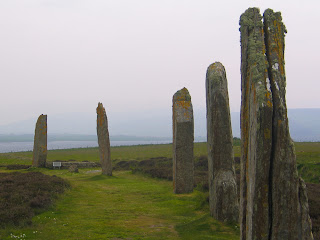A photo is a two dimensional thing. It has height and it has width, but alas, no depth.
So how can you add a third dimension to the lowly photograph?
Ok, you can’t. But you can create the illusion of depth in your images with the use of diagonal lines. The most basic way to do this, by example, is by taking a photo of a house from the corner instead of straight on. Look at how you can tell that your subject, the house, has a real sense of depth.
 Diagonals are everywhere - but sometimes they are so obvious that you have to look for them. Consider the street you live on. Where are the diagonals? Look at the curbs and how the trail off into the distance? Diagonals!
Diagonals are everywhere - but sometimes they are so obvious that you have to look for them. Consider the street you live on. Where are the diagonals? Look at the curbs and how the trail off into the distance? Diagonals!  The hallway at school. Photogenic? You may not think so - but look! Step to the side and you have created diagonals and perspective, and DEPTH. That's what we are looking for, that third dimension.
The hallway at school. Photogenic? You may not think so - but look! Step to the side and you have created diagonals and perspective, and DEPTH. That's what we are looking for, that third dimension. Diagonals don't stop there. Look at a line of trees, and how their trunks make a line. Look at any thing or scene that interests you. Move yourself until you find an angle that generates a diagonal leading you in to the photos!
Diagonals don't stop there. Look at a line of trees, and how their trunks make a line. Look at any thing or scene that interests you. Move yourself until you find an angle that generates a diagonal leading you in to the photos!Homework? Use the "Boom!" method from March 30, or use your camera and take photos of your own house or building, emphasizing the diagonal lines formed by the roof and the walls, and notice how your position changes everything!
Next week, curves!



